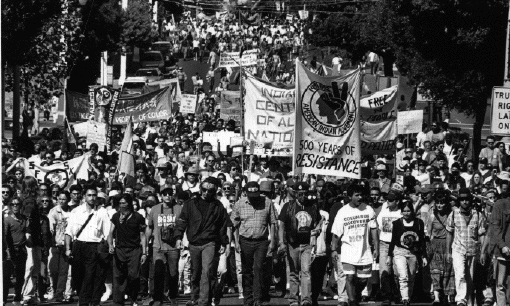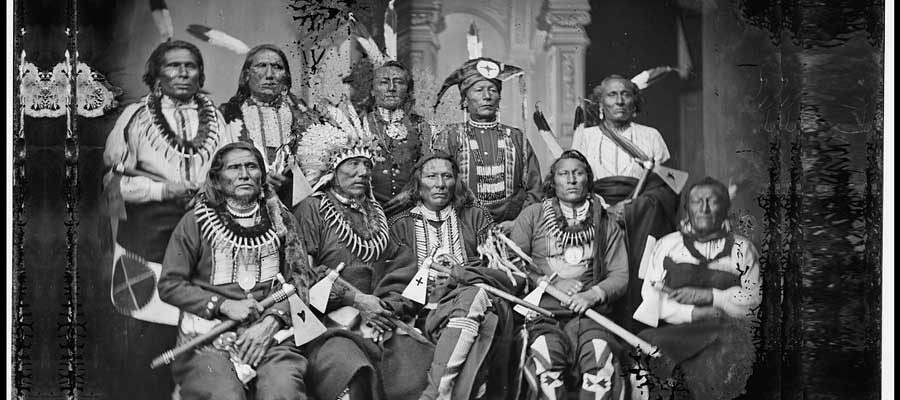
Unbroken Spirit: The Enduring Legacy of Native American Resistance
For centuries, the dominant narrative of American history has often painted Native American peoples as passive victims, inevitably swept aside by the tide of European expansion. Yet, beneath this simplistic veneer lies a profound and complex history of unwavering resistance – a testament to the resilience, ingenuity, and enduring spirit of Indigenous nations across the continent. From the first encounters with European settlers to the contemporary struggles for land and sovereignty, Native American resistance has been a continuous, multifaceted phenomenon, shaping the very landscape of North America and challenging the myths of conquest.
This is not a story of defeat, but of survival, adaptation, and an unyielding fight for self-determination against overwhelming odds. It is a chronicle of courage, strategic brilliance, and the deep spiritual connection to land that fueled countless battles, diplomatic maneuvers, and cultural renaissances.

The Dawn of Defiance: Early Encounters and Colonial Wars
The arrival of Europeans was not met with universal awe or immediate surrender. Initial interactions often involved trade, curiosity, and cautious alliances. However, as colonial ambitions escalated, fueled by land hunger, resource exploitation, and the devastating spread of foreign diseases, resistance became inevitable. Early skirmishes quickly escalated into protracted conflicts, as Native nations fought to protect their territories, lifeways, and autonomy.
One of the earliest and most brutal examples was King Philip’s War (1675-1678) in New England, led by Metacom, known to the English as King Philip, a sachem of the Wampanoag people. United by a common threat, Metacom forged an alliance of Algonquian tribes in a desperate bid to expel the English settlers who were encroaching on their ancestral lands and imposing their laws. The conflict was devastating, marked by immense casualties on both sides and the destruction of numerous towns. Though ultimately suppressed, with Metacom’s death and the decimation of his people, the war profoundly altered the colonial landscape and served as a stark early warning of the ferocity with which Native peoples would defend their homelands.
Decades later, in the wake of the French and Indian War, Pontiac’s Rebellion (1763-1766) erupted in the Great Lakes region. Pontiac, an Ottawa chief, spearheaded a pan-tribal confederacy to resist British expansion and the oppressive policies that followed their victory over the French. Utilizing guerrilla tactics, Native warriors captured several British forts and laid siege to others, demonstrating a remarkable capacity for coordinated action across diverse nations like the Ottawa, Delaware, Shawnee, and Huron. While the rebellion eventually waned due to internal divisions and supply issues, it forced the British Crown to issue the Proclamation of 1763, restricting colonial settlement west of the Appalachian Mountains – a significant, if temporary, acknowledgement of Native sovereignty.
A Republic’s Expansion: The Nineteenth Century’s Unrelenting Pressure
The formation of the United States brought no respite; instead, it ushered in an era of aggressive westward expansion, often codified by policies like the Indian Removal Act of 1830. This period saw some of the most iconic figures of Native resistance emerge, often attempting to forge broader alliances against a rapidly industrializing and expanding power.
Perhaps no figure embodies this spirit more than Tecumseh, a Shawnee warrior and diplomat, and his brother, Tenskwatawa, "The Prophet." In the early 19th century, they spearheaded a powerful pan-tribal confederacy aimed at uniting Native nations from the Great Lakes to the Gulf Coast to resist American encroachment. Tecumseh famously declared, "The way, the only way, to stop this evil is for all the red men to unite in claiming a common and equal right in the land, as it was at first, and should be now—for it was never divided, but belongs to all." His vision was revolutionary, advocating for a collective Indigenous identity and a united front against the land-hungry settlers. Though Tecumseh’s dream was shattered at the Battle of the Thames in 1813, his legacy inspired future generations of resistance.
The Seminole Wars (1816-1858) in Florida represent the longest and costliest conflicts in American history against Native peoples. Led by figures like Osceola, the Seminoles, a diverse group including Creek refugees and escaped slaves, waged a brilliant guerrilla war against superior U.S. forces in the dense swamps of the Everglades. Their intimate knowledge of the terrain and their fierce determination allowed them to hold off the American military for decades, proving incredibly difficult to dislodge despite overwhelming technological and numerical disadvantages. Osceola’s capture under a flag of truce, and his subsequent death in captivity, became a symbol of American perfidy.

Even legal challenges were met with betrayal. The Cherokee Nation, a highly organized and assimilated nation, fought forced removal through the U.S. courts, famously winning their case in Worcester v. Georgia (1832). However, President Andrew Jackson notoriously defied the Supreme Court, leading to the infamous Trail of Tears (1838-1839), the forced march of the Cherokee and other Southeastern nations to Indian Territory, resulting in the deaths of thousands. This tragic episode underscores that resistance was not solely military; it also encompassed sophisticated political and legal efforts that were often brutally overridden.
The Plains Wars and the End of an Era: 1860s-1890s
Following the Civil War, American expansion intensified, focusing on the vast buffalo-rich lands of the Great Plains. The Plains Wars saw some of the most iconic clashes between Native warriors and the U.S. Army, as nations like the Lakota, Cheyenne, Comanche, and Apache fought to preserve their nomadic way of life and sacred lands.
Red Cloud’s War (1866-1868) stands out as a rare, decisive Native American victory. The Oglala Lakota chief Red Cloud orchestrated a brilliant campaign against the U.S. Army’s efforts to build forts along the Bozeman Trail, a route to Montana goldfields that traversed prime Lakota hunting grounds. Through relentless harassment and strategic ambushes, Red Cloud’s warriors forced the U.S. government to abandon the forts and sign the Fort Laramie Treaty of 1868, guaranteeing the Lakota a vast reservation, including the sacred Black Hills. Red Cloud famously stated: "They made us many promises, more than I can remember, but they never kept but one; they promised to take our land, and they took it." His victory, however, was short-lived as gold was discovered in the Black Hills just a few years later.
This discovery led to further conflict, culminating in the Great Sioux War of 1876-77, which included the legendary Battle of Little Bighorn (June 25, 1876). Under the leadership of spiritual leader Sitting Bull and the tactical genius of Crazy Horse, a coalition of Lakota and Cheyenne warriors annihilated General George Armstrong Custer’s 7th Cavalry. This stunning victory, however, was a final, desperate triumph. The overwhelming military response that followed led to the eventual subjugation of the Plains tribes, the systematic destruction of the buffalo, and the forced confinement of Native peoples onto reservations.
The era of armed resistance effectively ended with the Wounded Knee Massacre (December 29, 1890). As Lakota Ghost Dancers, adherents of a spiritual movement promising a return to traditional ways and the disappearance of white settlers, gathered near Wounded Knee Creek, U.S. troops opened fire, killing hundreds of unarmed men, women, and children. Wounded Knee became a tragic symbol of the brutal suppression of Native American culture and sovereignty, marking the formal end of armed resistance and ushering in a long period of forced assimilation policies.
The Twentieth Century Reawakening: Cultural and Political Revival
Despite the devastation of the reservation era and the imposition of policies like the Dawes Act (1887), which aimed to break up tribal lands and force individual ownership, the spirit of resistance never truly died. The 20th century saw a shift from armed conflict to political activism, legal battles, and cultural revitalization.
The Indian Reorganization Act of 1934 brought some changes, allowing tribes to re-establish self-governance, but federal control remained pervasive. Post-World War II, the U.S. government implemented "Termination" policies, aiming to dissolve tribal governments and assimilate Native Americans into mainstream society, often leading to devastating poverty and loss of identity. This, along with forced relocation to urban centers, sparked renewed Indigenous activism.
The American Indian Movement (AIM), founded in 1968, emerged as a powerful voice for Indigenous rights, inspired by the Civil Rights Movement. AIM utilized direct action and media attention to highlight historical injustices and advocate for treaty rights, tribal sovereignty, and self-determination. Key actions included the Occupation of Alcatraz Island (1969-1971) by "Indians of All Tribes," a symbolic act of reclaiming stolen land that garnered national attention.
In 1973, AIM led the Wounded Knee Occupation II, a 71-day standoff with federal agents on the Pine Ridge Reservation, resurrecting the painful memories of the 1890 massacre. This highly publicized event brought the plight of Native Americans to the forefront of national consciousness, forcing a reckoning with broken treaties, systemic poverty, and government oppression.
Beyond these high-profile events, the late 20th century saw significant legal victories affirming tribal sovereignty and treaty rights, particularly concerning fishing and hunting rights in the Pacific Northwest (the "Fish Wars"). Cultural revitalization movements flourished, with efforts to preserve Indigenous languages, traditions, and ceremonies, asserting identity as a form of resistance.
The Twenty-First Century: Enduring Sovereignty and Environmental Justice
Today, Native American resistance continues, adapting to contemporary challenges. The fight for environmental justice, protection of sacred sites, and recognition of treaty rights remains paramount. The Standing Rock Sioux Tribe’s resistance to the Dakota Access Pipeline (DAPL) in 2016-2017 became a global symbol of Indigenous environmental activism. Thousands of "water protectors" from tribes across North America and allies from around the world gathered to oppose the pipeline’s construction near their reservation and under the Missouri River, a vital water source. The movement, though facing violent repression, highlighted the ongoing disregard for Indigenous land rights, environmental concerns, and treaty obligations. It also demonstrated the power of digital activism and inter-tribal solidarity in the modern era.
Native American resistance is not a relic of the past; it is a living, evolving force. It manifests in courtrooms, on sacred lands, in cultural centers, and through the voices of a new generation of leaders. It is a persistent demand for justice, a reclaiming of narrative, and an unwavering commitment to the sovereign right of Indigenous nations to determine their own futures. From Metacom to Tecumseh, from Sitting Bull to the water protectors of Standing Rock, the unbroken spirit of Native American resistance stands as a powerful testament to human resilience, a vital chapter in the ongoing story of North America, and a beacon of hope for Indigenous peoples worldwide.


